Community & Equity
We have a responsibility to push for positive change.
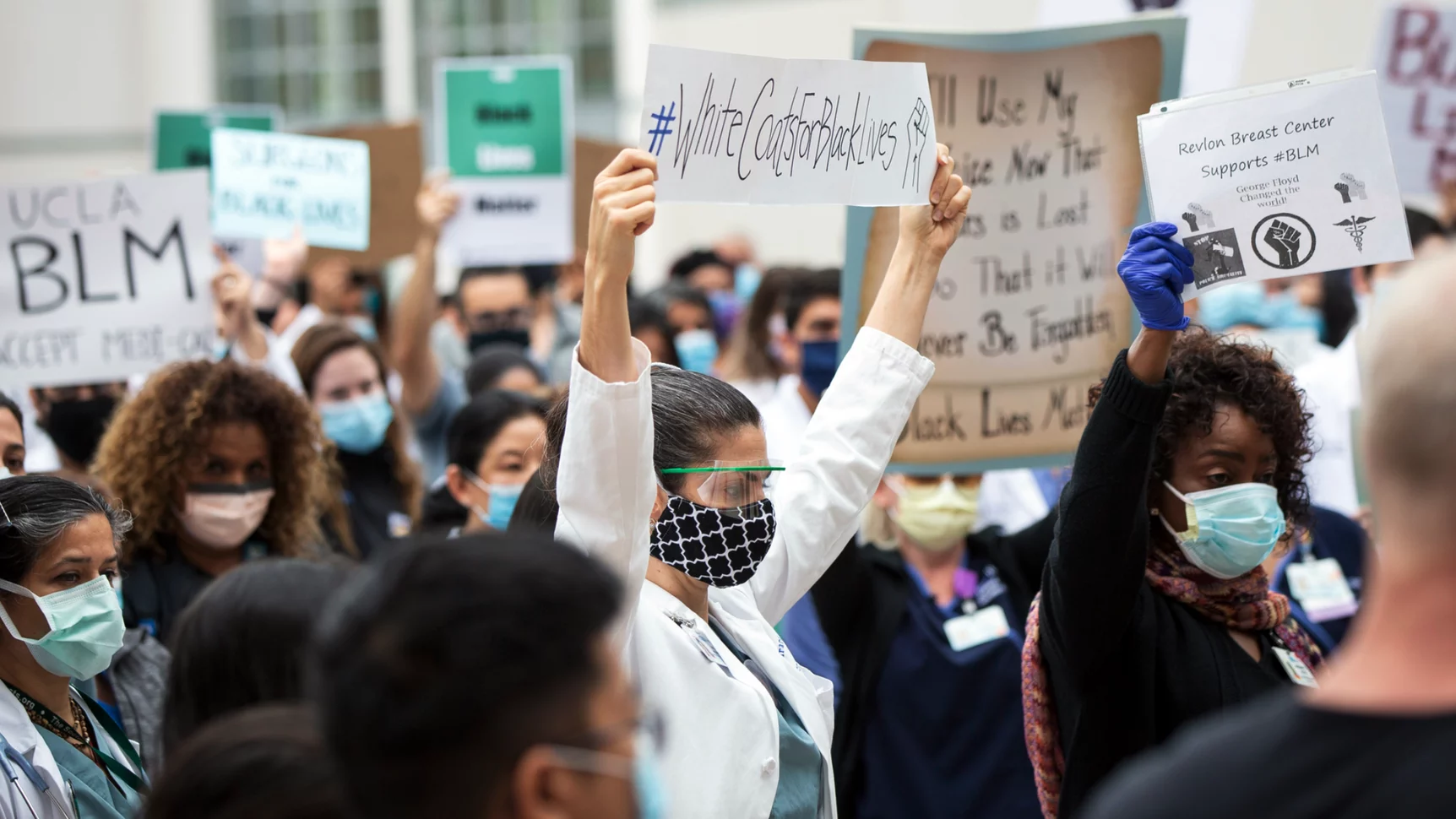
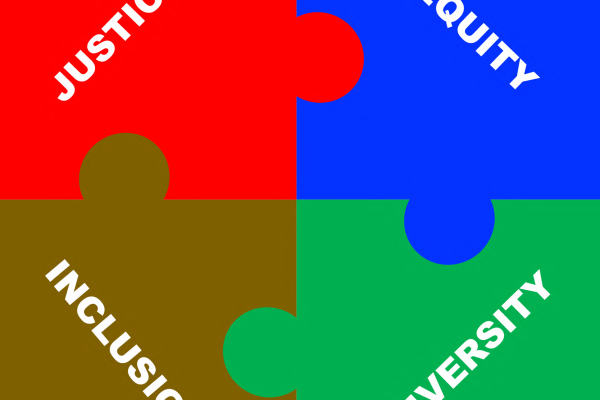
Justice, Equity, Diversity and Inclusion (JEDI)
Biological Chemistry (BC) is a basic science department whose members explore biochemical and cell biological processes with medical relevance. Our faculty, trainees, and staff understand that diversity of perspective confers resilience when faced with challenges and facilitates problem-solving. We also recognize that success depends on mutual respect for colleagues with diverse backgrounds and life experiences.
BC JEDI Committee
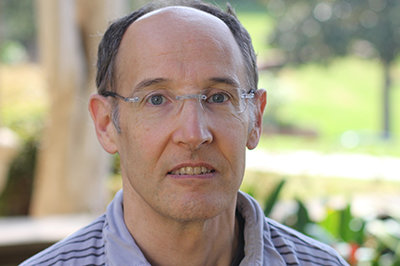
John Colicelli (faculty)
Chair of Biological Chemistry JEDI Committee
colicelli@mednet.ucla.edu
John Colicelli, Chair of Biological Chemistry JEDI Committee
I was born and raised in New Jersey to first-generation Italian American parents and attended Rutgers, a state university, where I majored in chemistry. After graduation, I served as a Peace Corp volunteer in Ghana, where I taught chemistry and physics at a boarding high school. I did my doctoral studies with Stephen Goff, a retrovirologist at Columbia University. I continued my training with Michael Wigler at Cold Spring Harbor Laboratory, where I focused on signal transduction by RAS proteins and tumorigenesis. I came to UCLA as an Assistant Professor of Biological Chemistry in November 1990. Teaching undergraduates, medical students, and graduate students is a particularly rewarding part of my job. I have also mentored numerous PhD students and several postdoctoral fellows. My administrative responsibilities include Vice Chair of Biological Chemistry and Assistant Dean for Academic Affairs.
I am an openly gay man but was not open during my training or my first few years at UCLA. I kept this part of my identity private because I believed it would put distance between me and my colleagues. I was concerned that other people would make assumptions based on my sexual orientation, and that it might somehow overshadow everything else that I am. In retrospect, I realize that I was making assumptions too. People certainly have a tendency to prejudge character based on unrelated traits, but trying to guess what others are thinking about me is a diversion from the more important work of questioning my own assumptions and building a meaningful life.
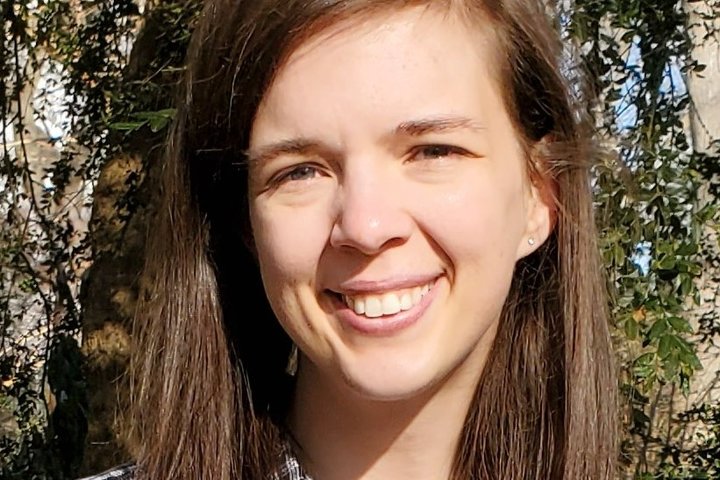
Sydney Campbell (PGR)
Postdoctoral Scholar Representative on Biological Chemistry JEDI Committee
slcampbell@mednet.ucla.edu
I studied biology and chemistry at Cornell University, where I also played varsity volleyball. As a student in the Schroeder Lab, I immediately loved doing research because the lab had the same competitive teamwork energy as the volleyball court, with the added benefit of solving real world problems. After graduating, I entered the Cell and Molecular Biology doctoral program at the University of Pennsylvania, where I worked in the Wellen Lab studying cell metabolism in pancreatic cancer. In 2021, I started as a postdoc in the Christofk Lab at UCLA, where I continue to study tumor metabolism in pancreatic and liver cancer, with a focus on tissue homeostasis and tumor initiation.
My passion for working on diversity and inclusion initiatives and outreach was sparked during graduate school. I had meaningful experiences in student government learning not only how I personally can better support my peers from underrepresented minority groups, but also how intentionally creating inclusive departmental and university-wide policies can make a huge difference in students’ quality of life. Now, one of my overall career goals is to increase active allyship and advocacy in the academic community. Through actions big and small, each of us can have a role in building a more just, equitable, diverse, and inclusive department.
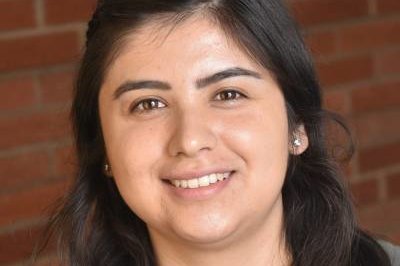
Clara Cano (GSR)
Graduate Trainee Representative on Biological Chemistry JEDI Committee
claratcano@g.ucla.edu
Clara Cano, Graduate Student Representative
I am from Los Angeles, California and part of the Gene Regulation, Epigenomics and Transcriptomics Home Area of the Molecular Biology Institute graduate program. I attended East Los Angeles College and then transferred to California State University, Los Angeles (CSULA) where I graduated with a B.S. in Biochemistry. I subsequently earned an M.S. in Biochemistry at CSULA as part of the NIH Research Training Initiative for Student Enhancement. My research during my master’s program focused on mechanisms of breast cancer chemoresistance. I joined the Plath Lab at UCLA to complete my doctoral research in the study of RNA mediated nuclear compartments. During my time at UCLA I have enjoyed partaking in diversity and inclusion efforts as part of the SACNAS@UCLA board, as coleader for the Scientific Excellence through Diversity Seminar series, and in joining the Biological Chemistry JEDI committee. I hope that my efforts at UCLA can lead to positive changes in fostering an equitable training environment.
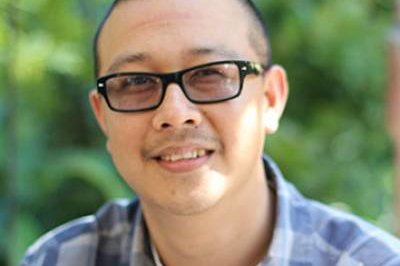
Brian Phan (staff)
Staff Representative on Biological Chemistry JEDI Committee
BPhan@mednet.ucla.edu
Brian Phan, HR Manager, Department of Biological Chemistry
I was born and raised in Southern California. Graduated from California State University, Dominguez Hills with a bachelor’s degree in Business Administration with a concentration in finance. I was hired as an administrative specialist in The Department of Biological Chemistry in April 2013. I am now the HR Manager for The Department of Biological Chemistry, and manage the academic personnel and staff HR for 6 departments.
Department of Biological Chemistry JEDI Plan
This plan was approved by all members of the BC JEDI committee, the Department Chair (Siavash Kurdistani) and the CAO (Phil Kwan). The report was provided to all faculty, postdocs, graduate students, and staff. The committee considers this a living document subject to revision based on feedback from interested Department members and DGSOM leadership.
Biological Chemistry (BC) is a basic science department with twenty primary-appointment faculty and seven secondary-appointment faculty members, as well as several Adjunct and active Emeriti faculty. Our research programs share a common theme of exploring biochemical and cell biological processes with medical relevance. In addition to teaching in the graduate, medical, and dental school curricula, we are mentors to graduate student researchers (GSRs, currently 35) who matriculate through several graduate programs (e.g., MB-IDP, NS-IDP, Chem. & Biochem., and Comp.|Med.) and postdoctoral fellows (postgraduate researchers, PGRs, currently 32) who enter through direct application to faculty members. Although it has no formal obligation to do so, the Department administers several undergraduate courses, and some faculty members contribute to courses run by other departments. Many of our faculty members also mentor undergraduate students in their laboratories. The BC staff includes Staff Research Associates (SRAs, currently 15) plus a CAO and twenty administrative staff.
GOALS, TACTICS, AND ASSESSMENT
Our overarching goal in this area is to build diversity within our faculty, trainees, and staff. As biomedical scientists, we understand that diversity of perspective confers resilience when faced with challenges and facilitates problem solving. We also acknowledge that there is a striking level of underrepresentation based on gender, ethnicity, and other identity categories. As a state land-grant institution, we look to the population demographics of California as a rough guide to achieving equal representation. We recognize that changing the composition of a university department requires time, dedication to outreach and recruitment, and a sustained effort to promote research career paths starting at early stages.
The Department’s progress toward gender equity in our primary faculty is instructive as we plan a path toward equity in other areas. Since 2006, we hired 7 female and 4 male faculty, while during the same period 2 female and 7 male faculty retired. These events correlated with a change in our female faculty membership from 10% to 35%. Our newest faculty member came from a Mentor Professor search that attracted candidates from groups underrepresented in academic research. We believe that with shared goals and an implementation plan monitored with assessments, it is possible to overcome the impediments that have hampered past efforts to expand diversity among faculty, trainees, and staff.
3-5 year Goal: Expand the range of candidates considered for faculty and training positions.
Rationale: The culture of a department reflects the people that make it up. Junior faculty enter as senior faculty retire, and new trainees join labs as older trainees move on to further training or a career. This turnover can keep a department vibrant, but stagnant hiring practices can lead to a situation in which people continue to come and go but the group perspective is static. Overcoming this trap requires a reexamination of search and recruitment strategies to attract exceptional scientists that come from diverse backgrounds and bring new perspectives. Our shift toward a more equitable gender composition has shown that such course corrections are possible. We will widen the aperture to include ethnic diversity, focusing on groups that are underrepresented in academic research, and develop approaches that accelerate the rate of change.
Goal 1 for 2022: Recruit one new faculty member from a group that is underrepresented in biomedical research. This person should have an expressed interest in mentoring trainees from underrepresented backgrounds.
Tactic 1: Include a representative cross section of BC faculty members in all stages of a DGSOM Mentor Professor search, including the inter-departmental screening of applicants.
Process and outcome measures: At this time (August 2022), we have recruited Debora Sobreira through a Mentor Professor search that included BC faculty members in the primary and secondary review of applicants. Dr. Sobreira plans to start in January, 2023. We hope to participate in another Mentor Professor search soon.
Goal 2 for 2022: Develop guidelines to help faculty members recruit postdoctoral fellows from diverse backgrounds. Because postdoc appointments are targeted (advertisements lead to multiple applicants focused on a particular lab and project), they are more akin to faculty hiring than graduate student recruitment. Therefore, the most effective way to attract candidates that are both qualified and diverse may be through advertisements that include EDI statements and appear on websites frequented by graduate students from underrepresented backgrounds. Providing a list of campus resources and programs that support trainees from underrepresented ethnic identities (e.g., Black, Hispanic), gender identities (e.g., LGBTQIA), and disabilities (e.g., sensory impaired) should facilitate recruitment efforts. Heightening faculty awareness in these areas should help them identify and attract well qualified trainees and expand diversity in the Department.
Tactic 1: Encourage faculty to advertise postdoc positions on websites frequented by young scientists from underrepresented ethnicities (e.g., SACNAS) in addition to general websites (e.g., FindAPostDoc). Consult with postdoctoral fellows and those senior graduate students who will soon be applying for postdoctoral positions to gather suggestions for what could most effectively attract trainees committed to EDI goals. Establish a range of considerations for holistic selection of trainees, including experience as a mentor.
Tactic 2: Develop clear reasoning and resources to persuade faculty to expand the scope of their evaluation process, including references to studies that justify these changes. Generate a list of support sources for URM trainees (include information related to DACA trainees). These resources will be introduced at a faculty meeting in an overview presentation that includes information on the merits of holistic review. The resources and presentation will be provided to faculty members afterwards.
Process and outcome measure ideas: Distribute collected materials to faculty and trainees for edits and revisions. Collect data on ethnic and gender identity of postdoctoral fellows to establish a baseline level of underrepresented groups in the Department (for comparison after implementation of the plan). Survey faculty to determine how many postdoctoral positions are filled each year, and what outreach efforts they believe work best. We expect to see increased representation of diverse trainees as well as an increased level of satisfaction with recruitment as faculty share strategies that work best.
Goal 3 for 2022: Provide open forum for discussion of JEDI work in Biological Chemistry.
Tactic 1: Create JEDI page with member bios and committee objectives on BC website. This will
demonstrate the Department’s commitment to JEDI efforts, raise awareness of our JEDI plan, and provide a level of accountability from within.
Process and outcome measure ideas: JEDI committee will make annual presentations at one of the Department’s weekly research presentations and one of the monthly faculty meetings. Request comments and suggestions following these presentations and through an anonymous discussion board. A record of presentations and feedback will be kept and reviewed at JEDI committee meetings.
Anticipated barriers (Goals 1-3): Faculty members may be reluctant to expand the criteria they have used in the past for hiring postdoctoral fellows.
Ideas for navigating anticipated barriers: Address these concerns directly at faculty meeting when outreach strategies are discussed (see Goal 2). Cite academic studies that have examined the effect of holistic review on short- and long-term outcomes. Enlist Department Chair to voice support before and during these discussions.
ADDITIONAL DATA TO REPORT
In support of GME, we ask that each department with residents and fellows report the following data: The race/ethnicity of your residents; The race/ethnicity of your fellows; The gender identity of your residents; The gender identity of your fellows.
Note: Graduate and Medical Education guidelines do not apply to research trainees in the Department of Biological Chemistry. Our continuing education efforts are described in the Professional Development section. We are, however, collecting gender identity data on faculty and trainees. We may require assistance from the Dean’s Office to compile data on race/ethnicity.
In support of our ARR, we ask each department to report race/ethnicity and gender data on people who have left the department, as well as reasons why they left.
Note: With one exception, all faculty departures in the past five years have been retirements.
Departing trainees have left for advanced training or employment. We will create a trial exit-form system to collect data on trainees leaving the Department.
REFERENCES
- Page, SE. Making the Difference: Applying a Logic of Diversity. (2007) Academy of Management Perspectives.
- Hong, L and Page SE. Groups of diverse problem solvers can outperform groups of high-ability problem solvers (2004) Proc. Nat. Acad. Sci. PMID: 15534225
- Sowell, R., Allum, J., and Okahana, H. Doctoral Initiative on Minority Attrition and Completion. (2015) Council on Graduate Schools
- Zhou, E. and Gao, J. Graduate Enrollment and Degrees: 2010 to 2020. (2021) Council on Graduate Schools
Scientific research thrives on collaborations that are inclusive and leverage the diverse
backgrounds of all participants. Successful collaborations are driven by more than just a complement of technical expertise, however. When team members cover a broad range of past experiences there are more opportunities for cross fertilization. The potential for synergy goes beyond experimentation, as individuals share their interpretations and build models to explain results. The same dynamics apply to the team of staff members who solve administrative problems and develop new programs.
A well-functioning Department should maintain an inclusive environment, with leadership(Chair and CAO) that values diversity. Members whose self-identification includes ethnicity, race, gender, or sexual orientation should be acknowledged and supported. We believe the stated goals will move us closer to a climate in which all Department members are comfortable sharing their ideas and challenging conventional wisdom in ways that are mutually beneficial.
We want to first note several valuable efforts the Biological Chemistry Department has already
taken to construct a welcoming and inclusive environment. In addition to posting Cultural North Star and diversity appreciation posters in common areas, we encourage members to get to know each other through: Wednesday coffee & cookie hours, Monday trainee presentations with provided lunch, a Welcome lunch each Fall, a Holiday party each Winter, and a Spring truck lunch. We communicate directly with Department members through email and reach a broader audience through our website and Twitter account. To address a special need, we converted a procedure room into a lactation room on the floor where 75% of our labs are located. The next closest lactation room is in another building— close enough to meet legal requirements for the University, but inconvenient for our faculty members and trainees. (This room is open to the entire UCLA community.)
GOALS, TACTICS, AND ASSESSMENT
3-5 year Goal
Establish a welcoming environment marked by equitable treatment for all trainees, staff, and faculty. Encourage networking activities that support inclusion.
Rationale: When members feel included and valued, they are more likely to contribute ideas and participate in group functions that benefit the entire Department.
Goal 1 for 2022 (1): Capture an image of diversity in our Department using results from the DGSoM Climate Survey plus within-Department surveys to identify shortcomings and unmet needs. We will also capture a literal image of our current faculty, PGRs, GSRs, and staff, then post these images to help people recognize their colleagues.
Tactic 1: Monitor and maximize the response rate of Department members to the Climate Survey as well as an annual in-Department gender survey that includes an open response section for ideas to build inclusivity and address special needs.
Process and outcome measure ideas: As survey deadlines approach, we will find out who has not yet responded and contact those individuals to encourage participation. It may be helpful to have our JEDI committee members reach out to like groups (faculty, postdocs, grad students, staff). We will work with contacts in the DGSOM Dean’s Office regarding the Climate Survey, which will provide important baseline data for our People goals (see first section of JEDI Plan). Outreach to non-responders will include a clear rationale (e.g., the use of these data when competing for extramural funds). We are considering small prizes or raffle tickets for a larger prize as an incentive to complete surveys.
Goal 2 for 2022 (2): Build bridges that connect faculty, trainees, and staff from alike and different backgrounds. Individuals from underrepresented groups who may feel excluded will benefit from connections and sharing strategies with people who may be dealing with similar situations inside or outside of our Department. All members would benefit from knowing more about the lived experience of others in the Department.
Tactic 1: Identify campus groups that bring together people from a variety of self-identifying groups and advertise these events through the Department website. Examples include the UCLA chapter of SACNAS and the Life Sciences LGBTQIA+ Mixer (organized by Jeff Maloy in MCDB).
Tactic 2: Create a ‘Department member of the month’ section on the Department’s website. At regular periods a photo and short bio of a different faculty member, PGR, GSR, or staff member will appear. We hope this will encourage individuals to share some of their formative experiences and build a feeling of community across the Department. We propose starting with JEDI committee members and Department leadership, followed by volunteers. Discussion prompts may include: what path did you follow to your current position?, what problems/failures did you have to overcome?, what book(s)do you recommend to trainees?)
Tactic 3: Establish a cross-lab collaboration seed grant program that promotes collaboration across a wide range of trainee histories and backgrounds. An inter-lab seed grant program was developed to incentivize collaborative project development during the first year of the pandemic, when trainees could not spend much time in labs. Proposals were reviewed by faculty and a small budget was provided to awardees. We propose to make this a regular program with recipients presenting their results at one of our weekly research presentations. By working together, first in brainstorming project ideas, then discussing experimental results, and finally collaborating on a presentation, trainees from diverse backgrounds will experience how multiple perspectives improve outcomes.
Process and outcome measure ideas: To assess the impact of Tactics 1&2 under this Goal, we can include an appropriate prompt in the annual Department gender survey (see Goal 1, Tactic 1, above). To gauge outcomes from Tactic 3, we will have awardees submit a final report that includes a short section for comments on lessons learned from working with trainees outside their home lab.
Anticipated barriers: Faculty and trainees may view the completion of surveys as a low priority. They may consider the inter-lab projects as a diversion from home lab goals, rather than an opportunity to expand what can be achieved.
Ideas for navigating anticipated barriers: We will share highlights of survey results and how those results have been used to strengthen grant applications as well as any examples of Department initiatives resulting from survey comments (see example of lactation room that resulted from informal comments). We will highlight the work of seed grant recipients at Department seminars and on the Department website.
ADDITIONAL DATA TO REPORT
Note: Graduate and Continuing Medical Education guidelines do not apply to research trainees in the Department of Biological Chemistry. Our continuing education efforts are described in the Professional Development section.
In support of our ARR, we ask each department to report deidentified MIRF data:
Note: A mistreatment reporting system for trainees in the DGSoM basic science departments is being developed by the Senior Associate Dean for Bioscience Graduate and Postdoctoral Education. This system will include an appropriately tailored Mistreatment Incident Reporting Form (MIRF) and a Committee on Learning Environment Oversight (CLEO) subcommittee. When the system is ready, it will be presented to different constituencies (faculty, trainees, staff), with explanations of how information is kept confidential.
REFERENCES
- Olzmann, JA. Diversity through equity and inclusion: The responsibility belongs to all of us. Mol. Biol. Cell. (2020) PMID: 33253074
- Hinton, A. and Lambert, WM. Moving diversity, equity, and inclusion from opinion to evidence. Cell Rep. Med. (2022) PMID: 35492245
- Asai, DJ. To Learn Inclusion Skills, Make it Personal. Nature (2019) PMID: 30696972
- Asai, DJ. Race Matters. Cell (2020) PMID: 32413295
Faculty members are intensely focused on advancing their research programs while also being
effective instructors and mentors. Although Assistant-level faculty have their own mentors who can offer career guidance, and the Dean’s Office provides workshops on the preparation and review of dossiers, many faculty remain uncertain about advancement criteria, evaluation processes, and the complex salary structure at DGSOM.
In addition to their teaching, most junior and mid-career faculty members are interested in
contributing service to the Department, School, and University but are unsure about the type and amount of service expected. At the same time, Department leadership needs to avoid imposing a ‘minority tax’ by asking underrepresented members to contribute disproportionately. Faculty members may also wonder how they can be considered for leadership positions (e.g., committee chair).
Uncertainty in all these areas adds to the already significant stress of academic life. In this section we focus on determining what information would be most helpful to junior and mid-career faculty as well as the most effective way to make that information available to them.
GOALS, TACTICS, AND ASSESSMENT
3-5 year Goal: Make academic advancement criteria more transparent and opportunities for
leadership positions more equitable.
Rationale: Faculty will benefit from clear and accessible descriptions of advancement procedures and pathways to leadership positions. Equitable distribution of this information should reduce stress by eliminating any perception that there is an inside track to information. All Department members, including any who may feel marginalized based on experiences prior to their appointment, will benefit from knowing what to expect. Broad familiarity with procedures is likely to be viewed positively by candidates we are recruiting and by faculty members who may be considering outside offers.
Goal 1 for 2022: Improve access to useful information on the advancement process.
Tactic 1: Find out what information faculty members feel is missing or unclear. Review what is currently available (e.g., Department bylaws) and revise to meet faculty needs. Create an onboarding document that lists key dates related to advancement and reminders to complete mentoring forms and obtain teaching evaluations from course directors.
Process and outcome measure ideas: Survey faculty members to determine what advancement related information they want and where they think it should be available. Establish a subcommittee to review survey data and identify processes that need more transparency or clarification, making sure to include junior faculty in discussions. For items relevant to our bylaws, revisions will be drafted, discussed at faculty meeting, and voted upon. The committee will recommend how best to distribute information not appropriate for inclusion in the bylaws. A follow-up survey after implementation will be used to assess faculty satisfaction.
Note: The JEDI committee leader (John Colicelli) is Vice Chair for academic personnel, an Assistant Dean for Academic Affairs, and the drafter of our current bylaws. He will lead this work.
Anticipated barriers: It may be difficult to get a good response rate from our 24 faculty members.
Ideas for navigating anticipated barriers: Direct emails from the Chair, plus phone calls and office visits from the Vice Chair, will be used to encourage a survey completion.
Goal 2 for 2022: Assess real and perceived equity in service on Department, School, and University committees.
Tactic 1: Survey faculty members to gauge their satisfaction with access to service opportunities. Collect data on current service from personnel files.
Process and outcome measure ideas: Present data in table format as raw numbers and normalized for current representation by gender, ethnicity, and academic rank.
Anticipated barriers: We have current gender identity data but not ethnic identity data for our faculty.
Ideas for navigating anticipated barriers: A recent effort by the Dean’s Office to update UCPath
gender and ethnicity data should lead to an accurate overview. The Biological Chemistry Chair, Vice Chair, and business office have made a concerted effort to maximize faculty response to this effort.
ADDITIONAL DATA TO REPORT
In support of our ARR, report: professional development resources for JEDI purposes (health equity, social determinants, cultural competency, anti-racism, gender inequality, homophobia/transphobia, etc.). Describe monetary value where applicable.
We are in the process of collecting data on Department support of undergrad programs, conference fees for trainees, and events that foster inclusion.
Members of the Biological Chemistry Department are continually learning how to be more
effective while also advancing their career objectives. Faculty, trainees, and staff do much of their work alone or in small groups, but they also need to work proficiently and professionally with other people inside and outside of the Department. Success in this context depends on mutual respect for colleagues from diverse backgrounds and openness to new perspectives. Opportunities to train and apply for advancements also need to be easily available and impartially distributed. These objectives are fundamental to building an inclusive culture within the Department.
Goals, Tactics, and Assessment
3-5 year Goal: Provide equitable access to resources for trainees, staff, and faculty to advance
professionalism and help everyone to pursue their advancement goals.
Rationale: Some Department members may miss opportunities for proficiency and advancement training if we do not make information available in an equitable and timely manner. Open access to opportunities will advance unbiased entry into leadership positions.
Goal 1 for 2022: Expand access to training opportunities for graduate students and postdocs.
Tactic 1: Collect, compile, and make available information for appropriate conferences, workshops, awards and competitive funding. Advertise the quarterly Scientific Excellence through Diversity Seminar (SEDS), organized by the UCLA chapter of SACNAS. This program lets trainees invite noted researchers to give science presentations and talk about how they overcome hurdles and contribute to increasing diversity. Advertise events sponsored by the graduate student Association for Multi-Ethnic Bioscientists’ Advancement, a group that promotes camaraderie and success in this community.
Process and outcome measure ideas: Make this information available on the Biological Chemistry Department website and send targeted announcements to members who request them.
Anticipated barriers: It may be difficult to collect info on all relevant opportunities. There may also be problems reaching trainees that do not regularly use their mednet email. Ideas for navigating anticipated barriers: Find sites that have already done some of this work, such as
Graduate Division and the Graduate Program in Bioscience (Dr. Greg Payne, Director). To improve communication, the Department will create a master list of preferred email addresses for all members.
Goal 2 for 2022: Expand access to training opportunities for staff with a focus on developing networks that include colleagues from diverse backgrounds.
Tactic 1: Compile and provide relevant information for staff members to increase proficiency in their job area (i.e., academic personnel and visa procurement) and to build leadership skills. Some of these should foster collaboration with counterparts from outside the Department and potentially outside the University. Department funds should be made available when appropriate.
Process and outcome measure ideas: Collect information for on- and off-campus workshops that foster collaboration across institutional boundaries. Make information available on the Biological Chemistry Department website and engage Department leadership to encourage participation.
Anticipated barriers: Many workshops and awards are specialized and may not be applicable.
Ideas for navigating anticipated barriers: Identify key information sources and reviews from past participants.
Notes: We do not have a faculty-focused goal for this year but will consider this in future meetings.
Additional data to report
In support of GME, we ask department with residents and fellows to report the following: Does not apply
In support of our ARR, we ask 1) Does your department perform research that advances JEDI?
Our current research portfolio does not include JEDI-related work.
Resources
- UCLA Postdoc Professional Development Site
- UCLA Graduate Development for Postdocs and Grad Students
- Administrative Management Group site that provides staff with opportunities for growth, including attending leadership conference.
- UCLA Health Leadership Development
Members of the Biological Chemistry Department are continually learning how to be more
effective while also advancing their career objectives. Faculty, trainees, and staff do much of their work alone or in small groups, but they also need to work proficiently and professionally with other people inside and outside of the Department. Success in this context depends on mutual respect for colleagues from diverse backgrounds and openness to new perspectives. Opportunities to train and apply for advancements also need to be easily available and impartially distributed. These objectives are fundamental to building an inclusive culture within the Department.
Goals, Tactics, and Assessment
3-5 year Goal: Provide equitable access to resources for trainees, staff, and faculty to advance
professionalism and help everyone to pursue their advancement goals.
Rationale: Some Department members may miss opportunities for proficiency and advancement training if we do not make information available in an equitable and timely manner. Open access to opportunities will advance unbiased entry into leadership positions.
Goal 1 for 2022: Expand access to training opportunities for graduate students and postdocs.
Tactic 1: Collect, compile, and make available information for appropriate conferences, workshops, awards and competitive funding. Advertise the quarterly Scientific Excellence through Diversity Seminar (SEDS), organized by the UCLA chapter of SACNAS. This program lets trainees invite noted researchers to give science presentations and talk about how they overcome hurdles and contribute to increasing diversity. Advertise events sponsored by the graduate student Association for Multi-Ethnic Bioscientists’ Advancement, a group that promotes camaraderie and success in this community.
Process and outcome measure ideas: Make this information available on the Biological Chemistry Department website and send targeted announcements to members who request them.
Anticipated barriers: It may be difficult to collect info on all relevant opportunities. There may also be problems reaching trainees that do not regularly use their mednet email. Ideas for navigating anticipated barriers: Find sites that have already done some of this work, such as
Graduate Division and the Graduate Program in Bioscience (Dr. Greg Payne, Director). To improve communication, the Department will create a master list of preferred email addresses for all members.
Goal 2 for 2022: Expand access to training opportunities for staff with a focus on developing networks that include colleagues from diverse backgrounds.
Tactic 1: Compile and provide relevant information for staff members to increase proficiency in their job area (i.e., academic personnel and visa procurement) and to build leadership skills. Some of these should foster collaboration with counterparts from outside the Department and potentially outside the University. Department funds should be made available when appropriate.
Process and outcome measure ideas: Collect information for on- and off-campus workshops that foster collaboration across institutional boundaries. Make information available on the Biological Chemistry Department website and engage Department leadership to encourage participation.
Anticipated barriers: Many workshops and awards are specialized and may not be applicable.
Ideas for navigating anticipated barriers: Identify key information sources and reviews from past participants.
Notes: We do not have a faculty-focused goal for this year but will consider this in future meetings.
Additional data to report
In support of GME, we ask department with residents and fellows to report the following: Does not apply
In support of our ARR, we ask 1) Does your department perform research that advances JEDI?
Our current research portfolio does not include JEDI-related work.
Resources
- UCLA Postdoc Professional Development Site
- UCLA Graduate Development for Postdocs and Grad Students
- Administrative Management Group site that provides staff with opportunities for growth, including attending leadership conference.
- UCLA Health Leadership Development
Our Department is a community within multiple other communities. As an administrative unit of DGSOM, we train graduate, medical, and dental students for careers in the academic and private sectors. We are also instructors and mentors to undergraduates, many of whom are preparing to enter graduate programs.
Widening this field of view, we are part of a city, county, state, and nation with elementary, high school, and undergraduate students who are discovering science and perhaps just beginning to contemplate career options in the broad field of biomedical research. Our faculty and trainees can have an outsized impact on all these students by awakening their interest in science, instilling confidence, and helping them to envision paths that lead to rewarding professions in scientific discovery.
Goals, Tactics, and Assessment:
3-5 year Goal: Increase participation of Department faculty members and trainees in programs that train young scientists from diverse backgrounds.
Rationale: These programs can widen the pipeline for onboarding independent scientists from groups that are currently underrepresented.
Goal for 2022: Connect our faculty and trainees with campus outreach programs that support
undergraduates interested in research. These include academic year programs such as Maximizing Access to Research Careers (MARC) and Program for Excellence in Education and Research in the Sciences (PEERS). The campus also has several summer programs that attract undergraduates from local Cal State, community and private (e.g., Mount Saint Mary’s) colleges, as well as HBCUs across the nation.
Tactic 1: Work with colleagues in other basic science departments and program directors to identify opportunities for faculty and trainee participation as mentors. Work with the Entering Mentoring Training (EMT) Program that helps pre- and post-doctoral trainees to become more effective undergraduate mentors by providing strategies and establishing a mentor support network. The EMT program also includes seminars that raise awareness of diversity issues.
Process and outcome measure ideas: Exchange information through the basic science crossdepartment (super six) EDI committee. Collect information from program directors on past participation by Biological Chemistry labs to establish a baseline for comparison as we build
participation by faculty and trainees.
Tactic 2: Get buy-in from the Department in the form of financial support to subsidize the cost of reagents in labs that mentor undergraduates from outreach programs. Provide guidance to faculty on how to apply for NIH supplements to support URM undergraduates. This would serve as a clear statement that our Department encourages these efforts.
Process and outcome measure ideas: Present a request for support to the Chair. Work with the CAO to identify appropriate funds.
Anticipated barriers: Some outreach programs may already be operating ‘at capacity,’ based on their available funds and administrative support.
Ideas for navigating anticipated barriers: Explore Department contributions in funds and compensated staff effort. (We already provide some resources for programs that train UCLA undergraduates.)
Note: Later year goals will explore outreach to elementary and high schools.